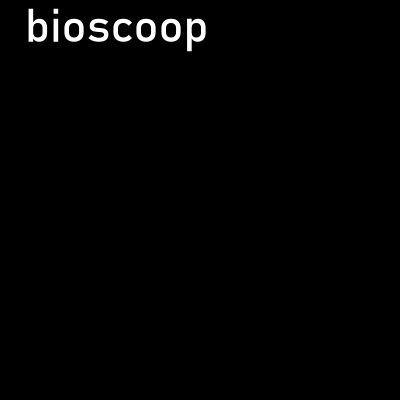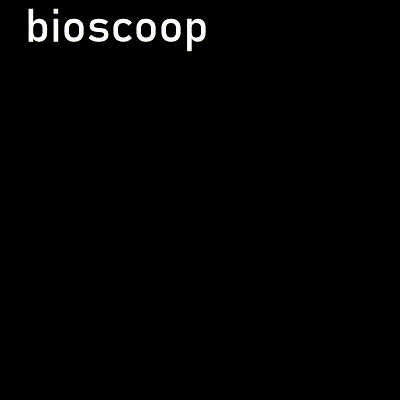Bioscoop, a DSL for FFmpeg
This document serves as a quickstart for the Bioscoop library. It is geared toward Clojurians as it assumes knowledge of namespaces, the REPL, etc.
Bioscoop is a DSL to program FFmpeg’s filtergraphs. Start by requiring the Bioscoop macros and the bioscoop.built-in namespace.
(require '[bioscoop.macro :refer [bioscoop defgraph]]
'[bioscoop.built-in :refer [help]])Let’s build a simple animation. We will start with a black background. The color filter provides that.
(bioscoop (color)){:chains [{:filters [{:name "color", :args nil}]}]}Note that we didn’t require color. It is available thanks to the bioscoop.built_in namespace, alongside all of the other filters.
If you need help with the parameters that a filter accepts, type in the REPL:
^:kind/hidden
(help "color")Bioscoop recognizes the same parameters as FFmpeg, with a caveat. In FFmpeg, some filters define the same parameter twice, once fully spelled out, and once in shorthand form (as if the syntax wasn’t terse enough). For example, w and width. Bioscoop doesn’t accept the shorthand version by design.
On top of that black canvas, we are going to draw text twice per second, positioned randomly. In order to achieve that, we will refer the x and y coordinates to an expression instead of fixed values.
(bioscoop (drawtext {:text "bioscoop" :fontcolor "white" :x "'mod(random(0)*10000,W-tw)'" :y "'mod(random(1)*10000,H-th)'"})){:chains
[{:filters
[{:name "drawtext",
:args
#:bioscoop.domain.specs.drawtext{:text "bioscoop",
:fontcolor "white",
:x "'mod(random(0)*10000,W-tw)'",
:y
"'mod(random(1)*10000,H-th)'"}}]}]}The bioscoop macro accepts a subset of Clojure. You can use let bindings and all of clojure.core. It returns a data structure, the internal representation of a filtergraph.
Putting everything together, we can write:
(bioscoop (chain (color {:duration 5})
(drawtext {:text "bioscoop"
:fontcolor "white"
:x "'mod(random(0)*10000,W-tw)'"
:y "'mod(random(1)*10000,H-th)'"})
(fps {:fps "2"}))){:chains
[{:filters
[{:name "color", :args #:bioscoop.domain.specs.color{:duration 5}}
{:name "drawtext",
:args
#:bioscoop.domain.specs.drawtext{:text "bioscoop",
:fontcolor "white",
:x "'mod(random(0)*10000,W-tw)'",
:y
"'mod(random(1)*10000,H-th)'"}}
{:name "fps",
:args #:bioscoop.domain.specs.shared.duration{:fps "2"}}]}]}Or, if we need a handle on the filtergraph, we can use defgraph which will intern a Var with a name of our choosing.
(defgraph filtergraph (chain (color {:duration 5})
(drawtext {:text "bioscoop"
:x "'mod(random(0)*10000,W-tw)'"
:y "'mod(random(1)*10000,H-th)'"})
(fps {:fps "2"})))#'bioscoop.quickstart/filtergraphTo convert the internal data structure, or the handle, back to a filtergraph, we use to-ffmpeg:
(require '[bioscoop.render :refer [to-ffmpeg]])(to-ffmpeg filtergraph)"color=duration=5,drawtext=text=bioscoop:x='mod(random(0)*10000,W-tw)':y='mod(random(1)*10000,H-th)',fps=fps=2"Finally, the filtergraph is ready to be fed to FFmpeg. While there is a helper in Bioscoop, how and where you run the FFmpeg command is entirely up to you. For example, you can display the animation in the terminal with ffplay -f lavfi -i followed by the filtergraph.
Note: FFplay is a companion player that is most often installed together with FFMpeg.
And voilà!
Content creators often reuse a preamble in their broadcasts. This use case is an excellent opportunity to demonstrate how Bioscoop provides means of composition. It also demonstrates how you reuse definitions across namespace boundaries.
^:kind/hidden
(in-ns 'bioscoop.masterpiece)(require '[bioscoop.quickstart :refer [filtergraph]]
'[bioscoop.macro :refer [bioscoop defgraph]]
'[bioscoop.built-in])We will simulate the actual video content with a FFMpeg dummy filter, testsrc. The intro is our filtergraph referred to in the bioscoop.quickstart namespace.
(defgraph masterpiece (testsrc))#'bioscoop.masterpiece/masterpiece(bioscoop (compose [filtergraph ["intro"]]
[masterpiece ["masterpiece"]]
[["intro"] ["masterpiece"] (concat {:n 2})])){:chains
[{:filters
[{:name "color", :args #:bioscoop.domain.specs.color{:duration 5}}
{:name "drawtext",
:args
#:bioscoop.domain.specs.drawtext{:text "bioscoop",
:x "'mod(random(0)*10000,W-tw)'",
:y
"'mod(random(1)*10000,H-th)'"}}
{:name "fps",
:args #:bioscoop.domain.specs.shared.duration{:fps "2"}}]}
{:filters [{:name "testsrc", :args nil}]}
{:filters
[{:name "concat", :args #:bioscoop.domain.specs.concat{:n 2}}]}]}And voilà, again!
What are you going to make? We’ll be happy to link to your masterpiece in Bioscoop’s gallery.
source: src/bioscoop/quickstart.clj

